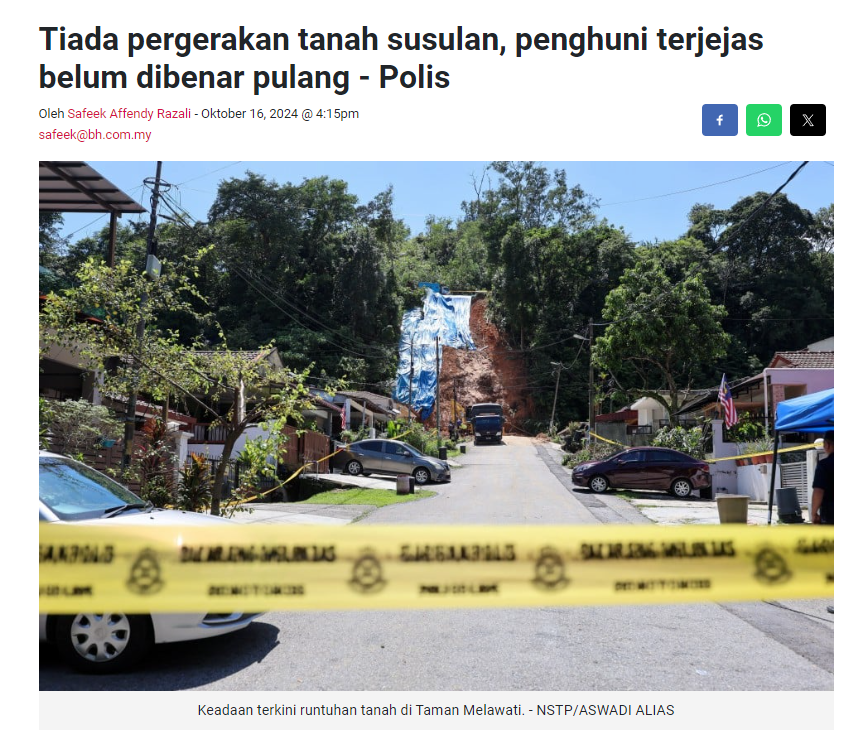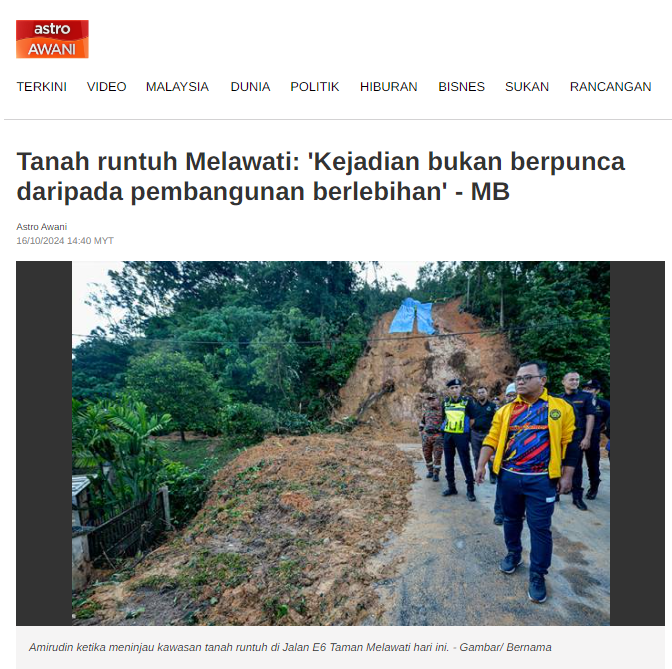Azhari also urged the authorities to ensure proper maintenance of the drainage systems around the neighbourhood, in addition to upgrading the current system.
"We have lived here for over 30 years, and this (landslide) is the worst. We will feel safe as long as maintenance is carried out by the authorities; this wouldn't have happened," he said.
On Tuesday, continuous heavy rain in the morning triggered a landslide along Jalan E6 in Taman Melawati.
Selangor Menteri Besar Datuk Seri Amirudin Shari said Jalan E6 had been identified as one of 114 landslide-prone hotspots in Ampang Jaya.
He explained that a clogged drain at the top of a hill in Taman Melawati caused the landslide, as overflowing water from the drain triggered a landslip that led to the landslide.
He added that the overflow had been an ongoing issue for several days before the incident.











